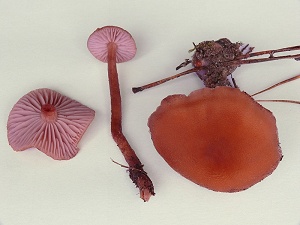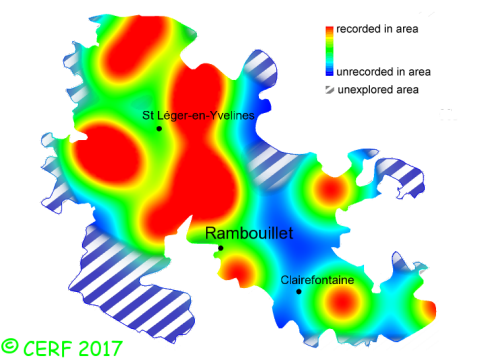| Laccaria bicolor (Maire) P.D. Orton |
|
|
|
|
|
|
The cap is orange-brown, ochre to flesh pink, paler when drying. The cap surface is smooth, not viscid nor sticky. The flesh is white with lilac shades, unchanging; its taste is faint or not distinctive; the odour is weak or not distinctive; its texture is fibrous. The gills are pale lilac, adnate to decurrent, distant . The spore print is white. This species is mycorrhizal or saprophytic. It grows on the ground, on a rather acid and poor soil, with birch, pine. The fruiting period takes place from June to December.
Chemical tests : none. Distinctive features : lilac mycelial down at the base; yellow cap but purple gills and stem (especially at its base); on dry soils Laccaria bicolor is quite rare and widely present in the forest of Rambouillet, and is infrequent, more generally speaking . | ||
|
page updated on 14/01/18

